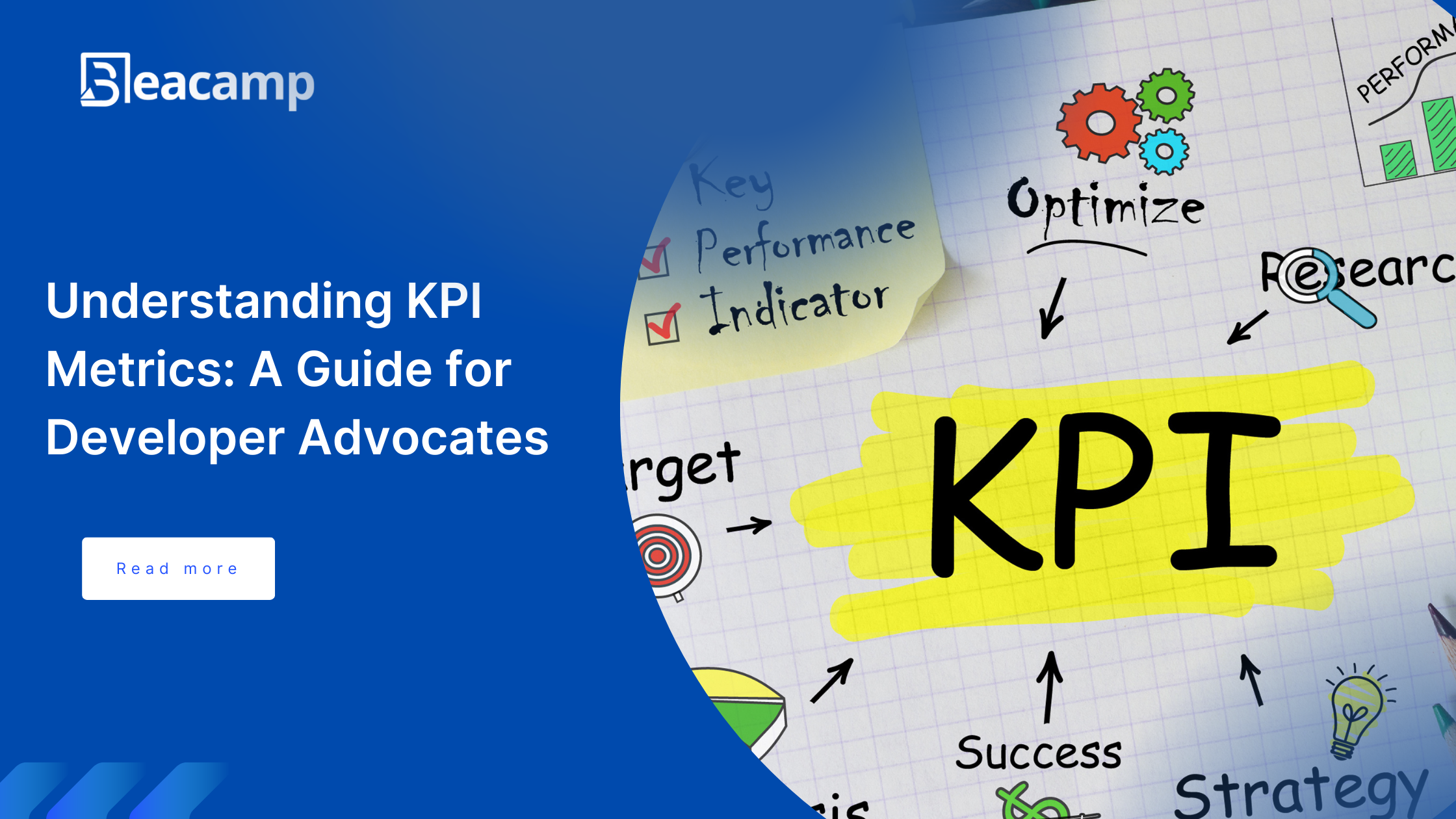Introduction
Working as a developer advocate, you introduce a new technology or product to a developer community and demonstrate its use cases and usefulness in the community daily.
In this guide, we will discuss how to improve the adoption of a new product to a developer community.
Let’s learn!
Understand The Tool

Before you think of a strategy to get others to use the product, it’s important to have firsthand experience. You should actively use the tool and understand its functionalities, use cases, and potential value to developers’ workflows. This will allow you to equip yourself with the knowledge needed to showcase its benefits and address possible concerns or objections that developers may have.
By becoming a genuine user, you can provide authentic testimonials and demonstrate how the product can genuinely enhance developers’ productivity and streamline their processes. This personal experience adds credibility to your efforts to promote the product to others, fostering trust and increasing the likelihood of adoption.
Identify the Target Audience

Once you have understood what the product does, you need to know who it is best suited for. Please note that not all developer tools are for every developer; that is why you need to understand the developer persona and the importance of creating personas based on your target audience. This helps ensure that your product aligns with the needs and preferences of your intended users, increasing its chances of success in the market.
You need to understand the developers who would use this tool and create a persona of their needs, pain points, and motivations that would help you tailor your strategy to resonate with them.
Build Relationships

Building relationships with developers is important for introducing them to new tools, fostering engagement, and creating genuine connections. Developer advocates play a huge role in building these relationships by actively participating in discussions, sharing valuable resources, and positioning themselves as reliable and trustworthy community members.
Through these interactions, developer advocates can gain the trust and respect of developers, making it easier to introduce them to new tools and engage with them on a deeper level. Strong relationships allow developer advocates to gather feedback, address concerns, and provide ongoing support, ultimately enhancing the adoption and success of the new tool among the developer community.
Demonstrate Value

To drive adoption within a developer community, ensure the tool’s benefits align with the community’s pain points. Developers are likelier to adopt a tool that addresses their specific challenges and improves workflow. For instance, if developers struggle with managing or maintaining code documentation, a tool such as Pieces that provides documentation features and coding assistance can be a useful solution or a developer struggling with reading articles can use Daily Dev to help them build a reading pattern. Highlighting how the tool can solve specific issues or streamline a developer’s process is key to capturing their attention.
Sharing case studies, user stories, or testimonials from existing users can be highly effective in driving adoption further. Real-life examples of how the tool has helped other developers achieve success can provide a sense of trust and credibility. By showcasing these results and benefits, developers can better understand the value the tool can bring to their work. Also, you can provide opportunities for developers to try the tool firsthand, such as through free trials or demos, which can help them experience the benefits directly and make informed decisions about adoption.
Provide Resources and Support

Detailed documentation, how-to guides, and content are needed to onboard new developers and ensure a smooth developer experience. These resources can clearly explain the tool’s features and functionalities and help developers quickly start and become productive.
Besides resources, you should offer ongoing support through community platforms and email to give developers a reliable channel for addressing questions or issues they may encounter while using the tool. Investing in comprehensive documentation and support can create a positive onboarding experience that fosters developer engagement and satisfaction.
Listen and Iterate

A developer community is a safe space for gathering real-time feedback on tools and products. The active participation of the community members allows for a continuous flow of insights and suggestions. This feedback loop is crucial for the success of any tool or product, as it enables developers to make informed decisions based on their users’ actual needs and preferences.
By using the community’s feedback in the development process, the internal team can create tools and products tailored to meet the community’s specific requirements. This enhances the overall quality and usability of the tool and fosters a sense of trust and appreciation within the community.
Community members feel heard, seen, and valued when their input is used. This encourages more engagement, creating a safer environment where feedback is welcomed to drive the improvement of the tool or product. Leveraging a developer community for real-time feedback increases user satisfaction, better product adoption, and long-term success.
Collaborate with Influencers

When driving for the adoption of a new tool, collaborating with influencers and leveraging their network is a good idea. Influencers have a significant following and are well-respected within their domain. By partnering with influencers, you can tap into their network and reach a wider audience. This can be especially beneficial for reaching developers, who are often influenced by the opinions of their peers.
To get started, identify influencers who strongly influence your target audience. Look for people who are active on social media, have a large following, and are known for their expertise. Once you have identified a few potential influencers, contact them and see if they are interested in partnering with you and the company.
Their endorsement can help build trust and credibility within the developer community. When developers see that a tool is being endorsed by someone they respect, they are more likely to give it a try. This can generate awareness and drive traffic to your website. By partnering with influencers, you can increase the visibility and adoption of your tool and ultimately achieve your business goals.
Measure and Analyze your KPIs

Key performance indicators (KPIs) are crucial tools for tracking the success of adoption efforts. You can better understand your adoption strategy’s effectiveness by monitoring key metrics such as the number of sign-ups, active users, engagement rates on social posts, and feedback received. This data allows you to analyze what is working well and what needs improvement, enabling you to make informed adjustments to ensure successful adoption.
KPIs provide a quantitative and qualitative assessment of the adoption process. They help companies understand the developer experience, identify areas for improvement, and measure the overall impact of their adoption efforts. By regularly tracking and analyzing KPIs, organizations can gain a comprehensive understanding of the adoption process and make data-driven decisions to maximize the success of their adoption initiatives.
Conclusion
To wrap this up, driving a product’s adoption by a developer community goes beyond just pushing the product to the community. You need to understand the target audience, showcase its use cases that address developers’ pain points, share resources to help them use the tool better, and be open to receiving feedback from them to improve the product.





2 thoughts on “How to Drive Product Adoption Within the Developer Community”